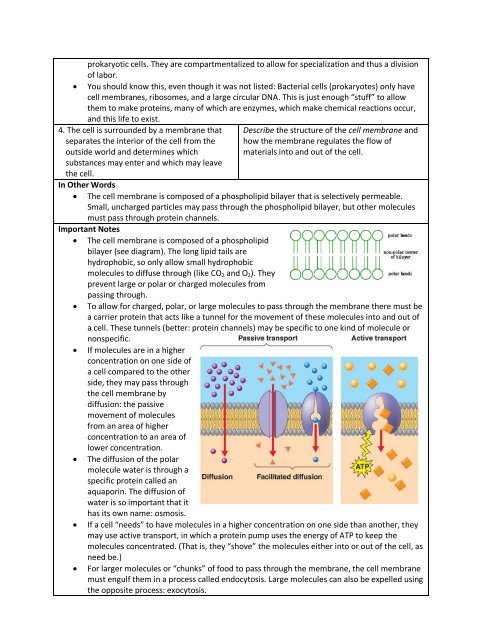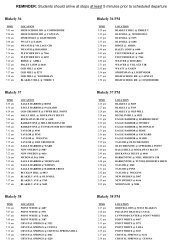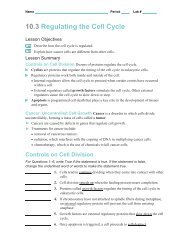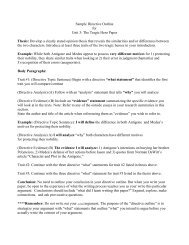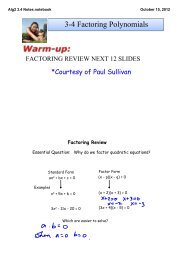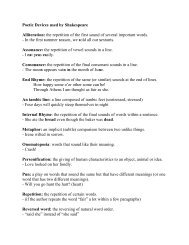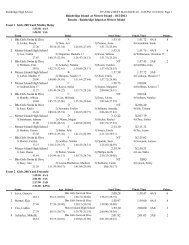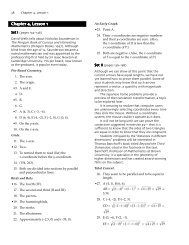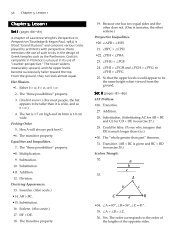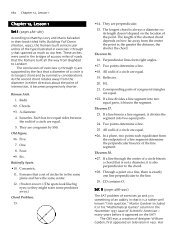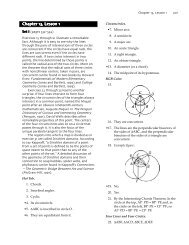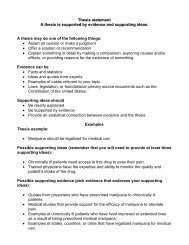Biology EOC Study Guide: Part 2, Cell Biology Content Standards ...
Biology EOC Study Guide: Part 2, Cell Biology Content Standards ...
Biology EOC Study Guide: Part 2, Cell Biology Content Standards ...
Create successful ePaper yourself
Turn your PDF publications into a flip-book with our unique Google optimized e-Paper software.
prokaryotic cells. They are compartmentalized to allow for specialization and thus a division<br />
of labor.<br />
You should know this, even though it was not listed: Bacterial cells (prokaryotes) only have<br />
cell membranes, ribosomes, and a large circular DNA. This is just enough “stuff” to allow<br />
them to make proteins, many of which are enzymes, which make chemical reactions occur,<br />
and this life to exist.<br />
4. The cell is surrounded by a membrane that<br />
separates the interior of the cell from the<br />
outside world and determines which<br />
substances may enter and which may leave<br />
the cell.<br />
In Other Words<br />
<br />
Describe the structure of the cell membrane and<br />
how the membrane regulates the flow of<br />
materials into and out of the cell.<br />
The cell membrane is composed of a phospholipid bilayer that is selectively permeable.<br />
Small, uncharged particles may pass through the phospholipid bilayer, but other molecules<br />
must pass through protein channels.<br />
Important Notes<br />
<br />
<br />
<br />
<br />
<br />
<br />
The cell membrane is composed of a phospholipid<br />
bilayer (see diagram). The long lipid tails are<br />
hydrophobic, so only allow small hydrophobic<br />
molecules to diffuse through (like CO 2 and O 2 ). They<br />
prevent large or polar or charged molecules from<br />
passing through.<br />
To allow for charged, polar, or large molecules to pass through the membrane there must be<br />
a carrier protein that acts like a tunnel for the movement of these molecules into and out of<br />
a cell. These tunnels (better: protein channels) may be specific to one kind of molecule or<br />
nonspecific.<br />
If molecules are in a higher<br />
concentration on one side of<br />
a cell compared to the other<br />
side, they may pass through<br />
the cell membrane by<br />
diffusion: the passive<br />
movement of molecules<br />
from an area of higher<br />
concentration to an area of<br />
lower concentration.<br />
The diffusion of the polar<br />
molecule water is through a<br />
specific protein called an<br />
aquaporin. The diffusion of<br />
water is so important that it<br />
has its own name: osmosis.<br />
If a cell “needs” to have molecules in a higher concentration on one side than another, they<br />
may use active transport, in which a protein pump uses the energy of ATP to keep the<br />
molecules concentrated. (That is, they “shove” the molecules either into or out of the cell, as<br />
need be.)<br />
For larger molecules or “chunks” of food to pass through the membrane, the cell membrane<br />
must engulf them in a process called endocytosis. Large molecules can also be expelled using<br />
the opposite process: exocytosis.


